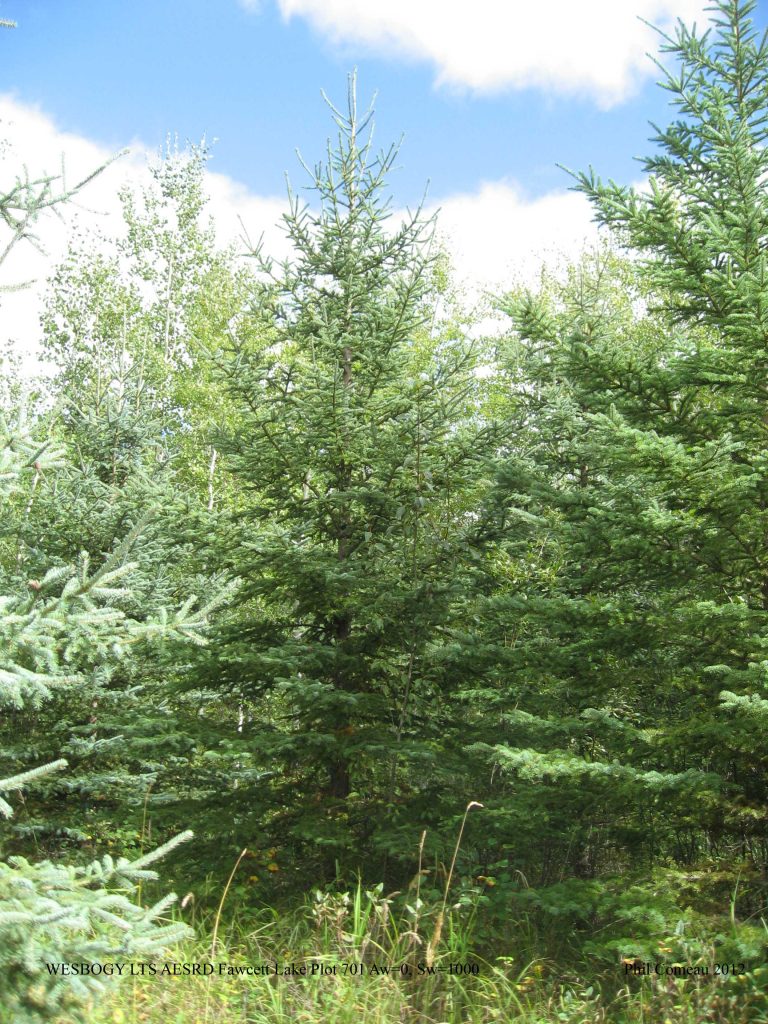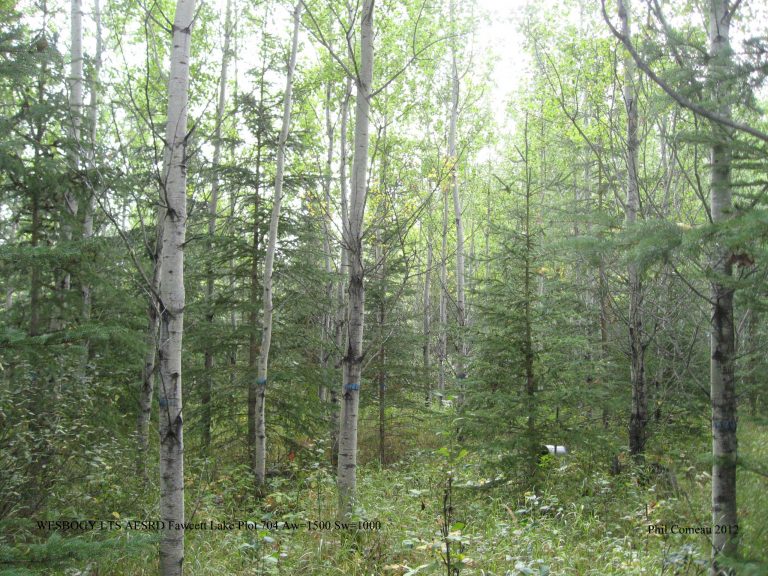Overview
Knowledge drives forest management. Canada is the third most forested country in the world with over half of its land area treed. The sustainability and resilience of this tremendous resource is threatened by climate change, natural and anthropogenic disturbances. Although we understand that this is occurring, we need to know more to effectively manage our forests in the face of these changes. Smartforests Canada is a collective research program based at the University of Quebec in Montreal to connect research and monitoring across Canada using high-precision tools to improve our understanding of forest change.

photo credit: P.G. Comeau, U Alberta
Background
Disturbances in the boreal forest are common, and have historically contributed to biodiversity. However, climate change is altering their frequency and nature, and with it, the relationship between natural and anthropogenic disturbances. Measuring this change and understanding what it means for the future of boreal forest biodiversity is the objective of the Smartforests Canada program.
The rub is that the boreal forest is not a uniform ecosystem. To measure and mitigate the consequences of these emerging changes requires measuring sites spanning the range of the boreal in Canada—a daunting task. Although there are several monitoring sites in the boreal forest, most have not included climate and microclimate monitoring. Smartforests Canada attempts to change this by understanding the mechanisms of forest functional and structural change linked to temperature and precipitation shifts across the country. To ensure that forest management can contribute to forest resilience in the future, well-coordinated research efforts that span a wide range of forest ecosystems and climatic conditions are needed.

Photo credit: University of Alberta
Innovation
Asking the right questions at the right scale in the right places is more difficult than it should be. It means striking out along new and individual paths. While innovation is essential to find emerging properties of ecosystem change, it’s not necessarily the best way to monitor that change over space and time. With this in mind, the true innovation of Smartforests Canada is simply to apply state-of-the-art tools to answering age-old questions—to build a standard toolbox of measures and methods to discover how forests are changing to variable disturbance pressures and climate change, and create a cross-country network of scientists to use those tools.
Discovery
Smartforests Canada is a new program, based on a Canada-wide network of high-precision forest monitoring plots. It has 3 objectives: First, establish and coordinate a monitoring plot network across a gradient of environmental and forest conditions. Second, synthesize observations to identify effects of global change on above- and below-ground forest dynamics and resilience. Third, guide the development of the next generation forest growth models and inform policy makers on best forest management and adaptation strategies.
Linked to remote sensing data, the program scales from measures of individual tree ecophysiology, to stand dynamics, regional forest change all the way to the health of the boreal forest biome. So far, Smartforests Canada includes a network of 100 sites spanning the boreal forest and some with more than 10-years of activity. In 2020, the Smartforests team in Quebec set up a proof-of-concept site to explore methods and ensure that the automated instruments could be properly calibrated with field surveys and satellite imagery among tree species.
Where in the wheel?
Climate change is messing with what we understand to be natural in forested ecosystems. Implementing EBM in the boreal forest is tied to both understanding NRV, the Natural Range of Variation, and patterns of Natural Disturbance, ND. But what is natural? The notion that EBM is about managing forests within NRV and emulating ND patterns and processes with anthropogenic disturbances makes sense in a world where the mean around the natural range is stable. Climate change is shifting that stability, challenging the notion that historical patterns in forest response to disturbance can guide the future.
The Smartforests program is about understanding how and why forests across Canada will react to climate change. This understanding is essential to the management of forest ecosystems as we adapt to climate change.

